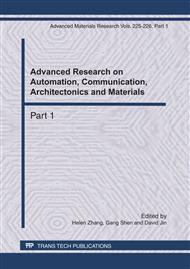p.158
p.162
p.166
p.170
p.174
p.178
p.182
p.186
p.190
Analysis on the Overall Characteristics and Laws of Economic Development
Abstract:
In light of current world economics heading towards a direction that demands a refurbished theoretical guidance, Huang, Mu and Huang’s (1990, 1991) “Overall Development of Global Economics” model - also affectionately known as the "4-ways, 2-forms" hypothesis - serves as a research guideline and a basic framework of economical development problems. Economical development throughout the history of mankind has experienced three phases, each phase bearing its own characteristics. While today’s developing countries linger in the era of nature driven self-sufficiency, developed countries have surged ahead into a phase of post-information economy where information technology serves as the backbone of Information Economic Era. At present, the financial disparities between nations often and inevitably produce conflicts driven by socio-economical differences and the resultant ideologies. What are the orientations in economic development for less developed countries, developing countries and developed countries Why does conflict between them arise and what causes this How can they be resolved These have become focal issues of concern among economist.
Info:
Periodical:
Pages:
174-177
Citation:
Online since:
April 2011
Authors:
Price:
Сopyright:
© 2011 Trans Tech Publications Ltd. All Rights Reserved
Share:
Citation:


